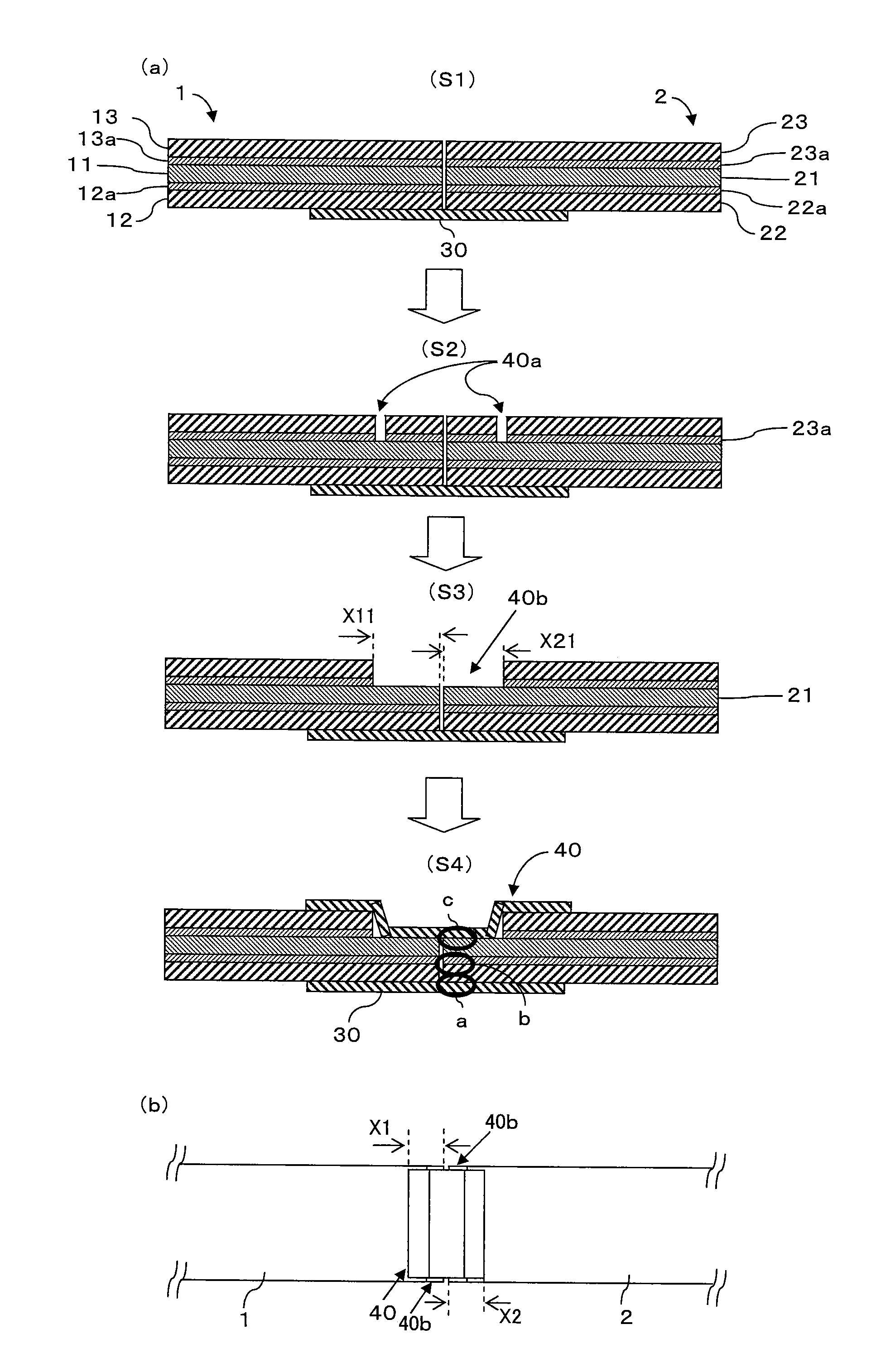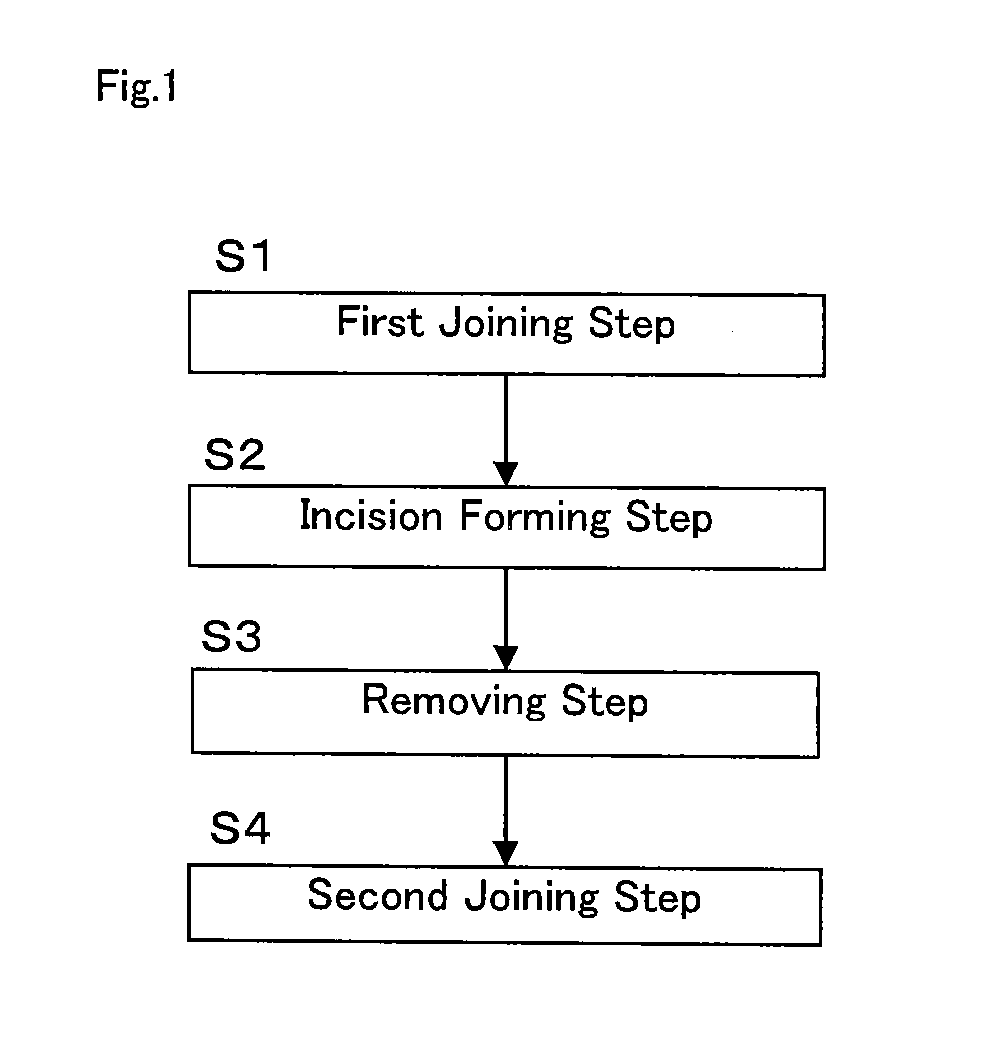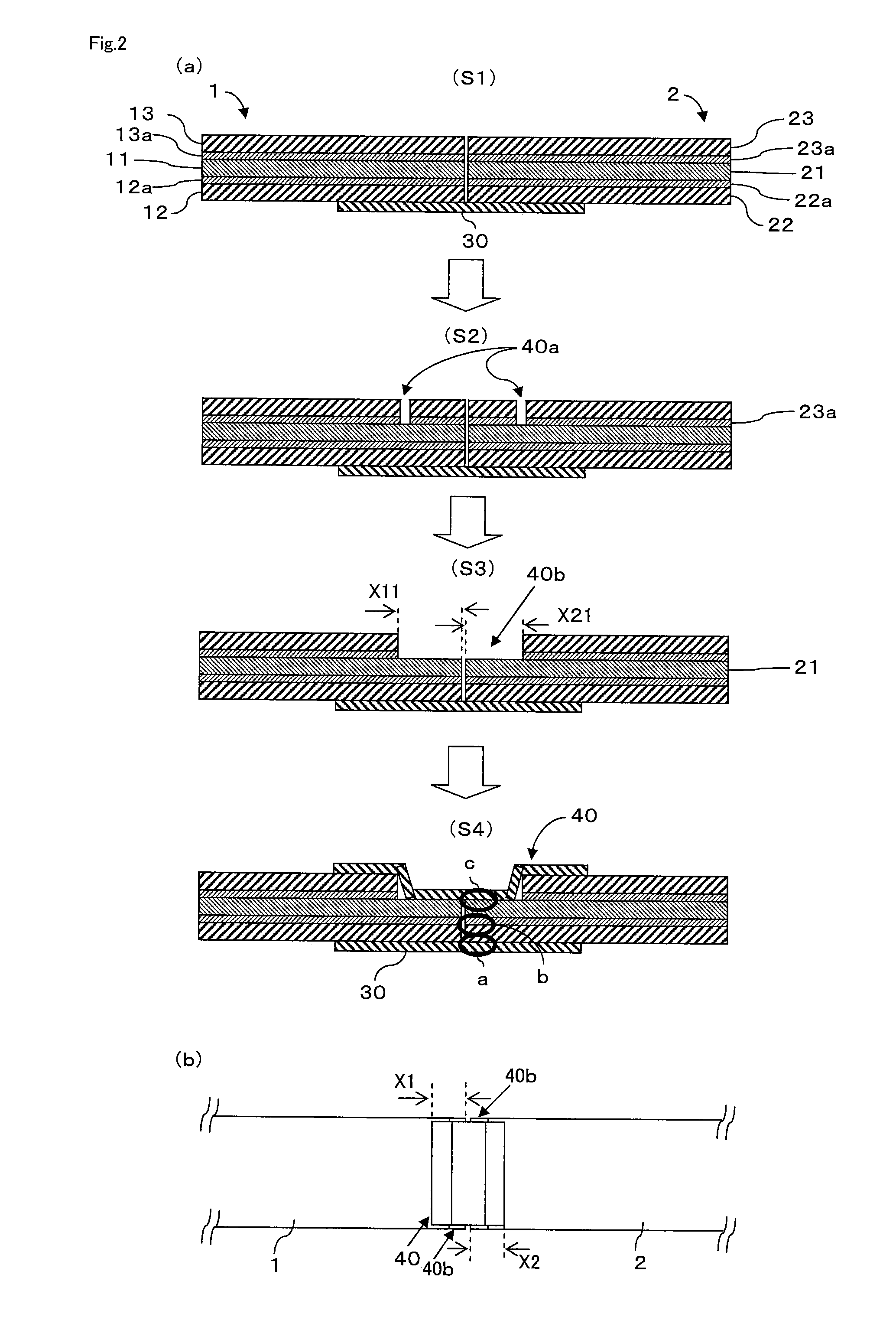Method for manufacturing joined sheet material, joined sheet material and method for manufacturing optical display unit
a technology of joining sheet and joining sheet, which is applied in the direction of lamination, packaging, decorative surface effects, etc., can solve the problems of difficult to peel off only the separator with a probability of 100%, and the inability to only peel off the separator
- Summary
- Abstract
- Description
- Claims
- Application Information
AI Technical Summary
Benefits of technology
Problems solved by technology
Method used
Image
Examples
embodiment 1
[0061]Embodiment 1 of the invention is described below. In this section, a description is given of how to join the first and second sheet products. FIG. 1 shows a flow chart of the procedure of a joining method. Part (a) of FIG. 2 shows an example of the cross-sectional structure of a joint portion where the first and second sheet products according to the flow chart of FIG. 1 are joined. Part (b) of FIG. 2 shows an exemplary plan view of the joint portion where the first and second sheet products are joined. FIGS. 3 to 6 show other exemplary modes of joint. Each of the first and second sheet products 1 and 2, for the description below, is, but not limited to, a laminated structure including a surface protecting film 13 or 23, a first pressure-sensitive adhesive 13a or 23a, a polarizing plate 11 or 21, a second pressure-sensitive adhesive 12a or 22a, and a release film 12 or 22.
[0062](1) First Joining Step (S1 in FIGS. 1 and 2). The release films 12 and 22 of the first and second sh...
example 1
[0123]A joined sheet product and an optical display unit were manufactured using the above joining method. The sheet product is a laminated structure composed of a surface protecting film (PET film), an acrylic pressure-sensitive adhesive layer, a polarizing plate, an acrylic pressure-sensitive adhesive layer, and a release film (a PET film having a silicone-treated surface to be laminated). The polarizing plate includes a stretched and dyed polyvinyl alcohol film polarizer and triacetylcellulose films provided on both sides of the polarizer with an adhesive interposed therebetween. The joining member used is an adhesive tape (Danpron Tape No. 3041 manufactured by Nitto Denko Corporation). The adhesive tape has a width of 10 cm, a thickness of 70 μm, an adhesive strength of 7 N / 25 mm, a tensile strength of 120 N / 25 mm, and an elongation percentage of 140%. Various test methods are the same as those described above. As shown in FIG. 2, the sheet products were joined to each other wit...
PUM
| Property | Measurement | Unit |
|---|---|---|
| Size | aaaaa | aaaaa |
| Sensitivity | aaaaa | aaaaa |
Abstract
Description
Claims
Application Information
 Login to View More
Login to View More - R&D
- Intellectual Property
- Life Sciences
- Materials
- Tech Scout
- Unparalleled Data Quality
- Higher Quality Content
- 60% Fewer Hallucinations
Browse by: Latest US Patents, China's latest patents, Technical Efficacy Thesaurus, Application Domain, Technology Topic, Popular Technical Reports.
© 2025 PatSnap. All rights reserved.Legal|Privacy policy|Modern Slavery Act Transparency Statement|Sitemap|About US| Contact US: help@patsnap.com



